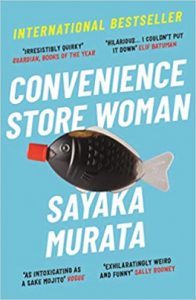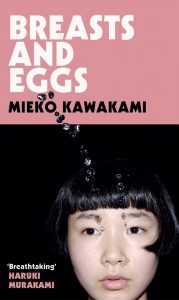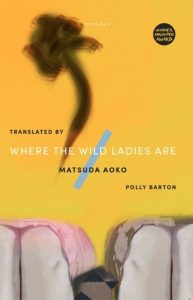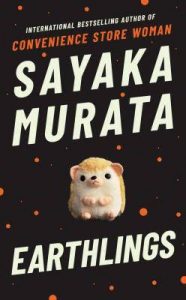3 Japanese Woman Writers Exploring Unconventional Romances
Unique Approaches To Love And Sex
The world of literature in the 21st century remains dominated by certain narratives: a majority of male authors, straight romances, and conventional stories about sex and love. This is as true in Japan as it is in the West. However, many of Japan’s modern writers are challenging these norms with unique and unconventional approaches to romance, sex, love, and marriage.
We continue to celebrate the straight, male-focused narratives of beloved authors like Yasunari Kawabata and Natsume Soseki. And Japan’s most successful contemporary novelist—Haruki Murakami—continues to write predominantly straight male protagonists who often engage in detailed but ordinary sexual and romantic scenes. However, it’s the Japanese women writers who fight back against these narratives with unconventional lesbian romances, asexual marriages, and stories of single mothers.
it’s the Japanese women writers who fight back against these narratives with unconventional lesbian romances, asexual marriages, and stories of single mothers
In the ‘80s and ‘90s, authors like Natsuo Kirino and Banana Yoshimoto wrote stories that challenged convention and reflected the progressive age in which their authors were living.
In Kitchen, Yoshimoto offered the center stage to a trans woman. While the novel was predominantly about a straight romance between two young people chased into each other’s arms by death itself, our young man’s mother is a trans woman who offers a little more color and variety to an otherwise ordinary tale of young love.
At a similar time, Natsuo Kirino wrote Out, an aggressively feminist story about four women working the graveyard shift at a factory. When one of these women breaks under the pressure caused by her husband’s cheating and gambling away their savings, she murders him at home and seeks the help of her colleagues to cover up the deed. Out is a warning to the patriarchal standard of our time: when enough is enough, you should be frightened.
Out is a warning to the patriarchal standard of our time: when enough is enough, you should be frightened
Following in the footsteps of these great women writers, the Japanese authors of the 21st century have been offering us engaging, challenging stories that bring visibility to unconventional yet real and true narratives, including romances. Three of these authors are Sayaka Murata, Mieko Kawakami, and Aoko Matsuda.
These are five stories by three wonderful women who explore unusual or atypical relationships in some way. Every protagonist is a woman who approaches romance, sex, and marriage in a unique way, demonstrating the different ways of living and loving.
Convenience Store Woman by Sayaka Murata
 Keiko is happy with her lot in life, both professionally and romantically. Though her family insists she should strive for more, she is happily single and doesn’t understand why she should have to change.
Keiko is happy with her lot in life, both professionally and romantically. Though her family insists she should strive for more, she is happily single and doesn’t understand why she should have to change.
Convenience Store Woman was translated into English by Ginny Tapley Takemori and, when it was published by Granta in 2018, it took over the literary world for a while. An unassuming short novel about a woman who has worked in a convenience store from the age of 18 to 36 and beyond left readers shaken. But why?
Convenience Store Woman paints a simple but vivid picture: a young woman who doesn’t need a man in order to be happy. In fact, she doesn’t need money or success either. She is happy with how she lives and works. She is comfortable, secure, and comforted by the familiar tick-tocking of life in the convenience store.
As her family asks for more, and an aggressive young man forces his thoughts and opinions on her, Keiko shrugs it all off and goes on as she is. Keiko represents the self-assured, self-satisfied modern woman: one who refuses to prove herself to anyone else and merely exists in a way that makes her comfortable and happy. Nothing more or less.
In an interview with The Japan Times, Murata herself said: “Some people feel similar to Keiko,” says Murata. “A lot of my readers have said they are losing the feeling of what is ‘normal’ in society.”
This sets a strong precedent: that Keiko is not so unconventional. She represents real people; however small their group may be, they exist. And representation, as we all know, is important. In that same interview, Murata claims that “Japanese readers laugh, and men have said they feel like the ending is scary.” Only proving that the patriarchy is a shaky and easily threatened thing.
A Clean Marriage (short story) by Sayaka Murata
The protagonists of A Clean Marriage met via a matchmaking site, in which the husband had advertised himself by saying: ‘I’m seeking an amicable daily routine with someone I get along well with, like brother and sister, without being a slave to sex.’ From here, the two enter into an asexual marriage. When they decide they want to have a child, they search for help and soon find a clinic that offers artificial insemination by way of something called a Clean Breeder.
The story, also translated by Ginny Tapley Takemori, explores sexual desire, marital affairs, and the non-traditional means by which a person or couple may choose to have and raise a child. In A Clean Marriage, the arrangement between our couple is sexless but they both still enjoy sex for the sake of gratification outside of the home and with other people.
A Clean Marriage presents a unique but not important marital circumstance. While the short story has a few quiet sci-fi elements, it is still entirely grounded and ordinary when considering the themes of sex, love, and marriage. This is not an ordinary marriage but these are still ordinary people living their ordinary lives. They are not doing things in the way that society expects and suggests, but they are happy with their choices and their lot.
This is what Murata has offered through both A Clean Marriage and Convenience Store Women: people who behave differently from the norm and yet are doing nothing bad or wrong. They are living their way, living such a quiet rebellion that, by any definition of the word, should not be rebellious at all.
In the same Japan Times interview, Murata remarks: “Personally, I think that sexless couples are kind of nice, and that there is real love. Of course, there are a lot of married couples that keep their romance. But it doesn’t have to be this way. I think that life without sex is also nice.”
Earthlings by Sayaka Murata
While Convenience Store Woman laid the groundwork for unconventional people quietly leading unconventional lives, Earthlings then came in like a wrecking ball. The novel, once again translated by Ginny Tapley Takemori, follows the story of Natsuki, who begins the novel as an angry child who sees the world as a factory that churns out people who churn out people.
As a child, Natsuki forms a close friendship, and then a brief romance, with her cousin Yuu, who believes himself to be an alien. The two agree that the world is a factory and they don’t belong in it. When Natsuko is all grown up, she enters into an asexual marriage with a man who enjoys conspiracy theories. Their relationship is reminiscent of that we see in A Clean Marriage. In fact, many of the book’s themes tread similar ground but Earthlings peppers in many other traumatic events, all focused around sexual acts.
Earthlings is an intentionally shocking book that reframes sex as a frightening thing—not from any religious or political perspective but, instead, a very personal one. It offers us a different lens through which to view sexual dominance and the choices we make surrounding sex and maturation. Once again, Murata is playing with conventional themes and asks us to see love, sex, and marriage through an unconventional lens. A lens that is very necessary in a world of sexual assault and abuse.
Breasts and Eggs by Mieko Kawakami
 One of the biggest books of 2020, Breasts and Eggs (translated by Sam Bett and David Boyd) offers two stories in one book, both narrated by Natsuko, a young woman living in Tokyo as a writer.
One of the biggest books of 2020, Breasts and Eggs (translated by Sam Bett and David Boyd) offers two stories in one book, both narrated by Natsuko, a young woman living in Tokyo as a writer.
In Book One, Natsuko is a passive narrator who hosts her sister who is visiting from Osaka. Her sister is in town to shop around for breast implants and has brought her daughter along. The latest has grown increasingly furious at the world as she learns more about the role of the woman—both socially and biologically. In Book Two, it’s Natsuko who takes center stage as she finds success as an author, finds peace and comfort in her single life, and now searches for a way to become a single mother.
Breasts and Eggs is a pair of stories that break down the role of the woman in modern society. It takes three women and uses them to examine and pull apart the gender rules and roles of today. There is anger and disgust from the perspective of Natsuko’s niece; submission and obsession through the actions of Natsuko’s sister, and quiet but confident rebellion via Natsuko’s own choices. The books also offer an emphasis on friendships and family bonds over romance and love. This is not a book about romance, love, sex, and marriage. It’s a book about women making choices for themselves and by themselves.
In an interview with The Guardian, Kawakami explains: “It’s just assumed that mothers will accept the burden. We’ll look after the children, teach them, prepare the bento and do all that extra work—even though many of us have jobs too.” She goes on to say that “men won’t give up their privileges easily. They’re brainwashed: be strong, don’t cry. But everyone gets old and understands what it is to be weak. We’re at the point where all that old stuff must be questioned.”
Hina-chan (short story in Where the Wild Ladies Are) by Aoko Matsuda
 Where the Wild Ladies Are, translated by Polly Barton, is a collection of modern feminist ghost stories, each one inspired by rakugo tales and kabuki plays from Japanese history. In the book, Matsuda has respun these folk tales into modern stories threaded with feminist themes and morals.
Where the Wild Ladies Are, translated by Polly Barton, is a collection of modern feminist ghost stories, each one inspired by rakugo tales and kabuki plays from Japanese history. In the book, Matsuda has respun these folk tales into modern stories threaded with feminist themes and morals.
In the story Hina-chan, a young woman fishes a skeleton out of the river. Soon enough, she is visited by the ghost which is tethered to the skeleton. From here, the two enter into an unusual and intimate queer relationship that crosses the border between life and death. While this story does not challenge the conventional behavior of marriage as such, it is a queer romance as well as a romance that does not involve living, breathing humans. It makes the argument that love can take any shape or form and transcend any boundary, provided it is permitted.














Leave a Reply